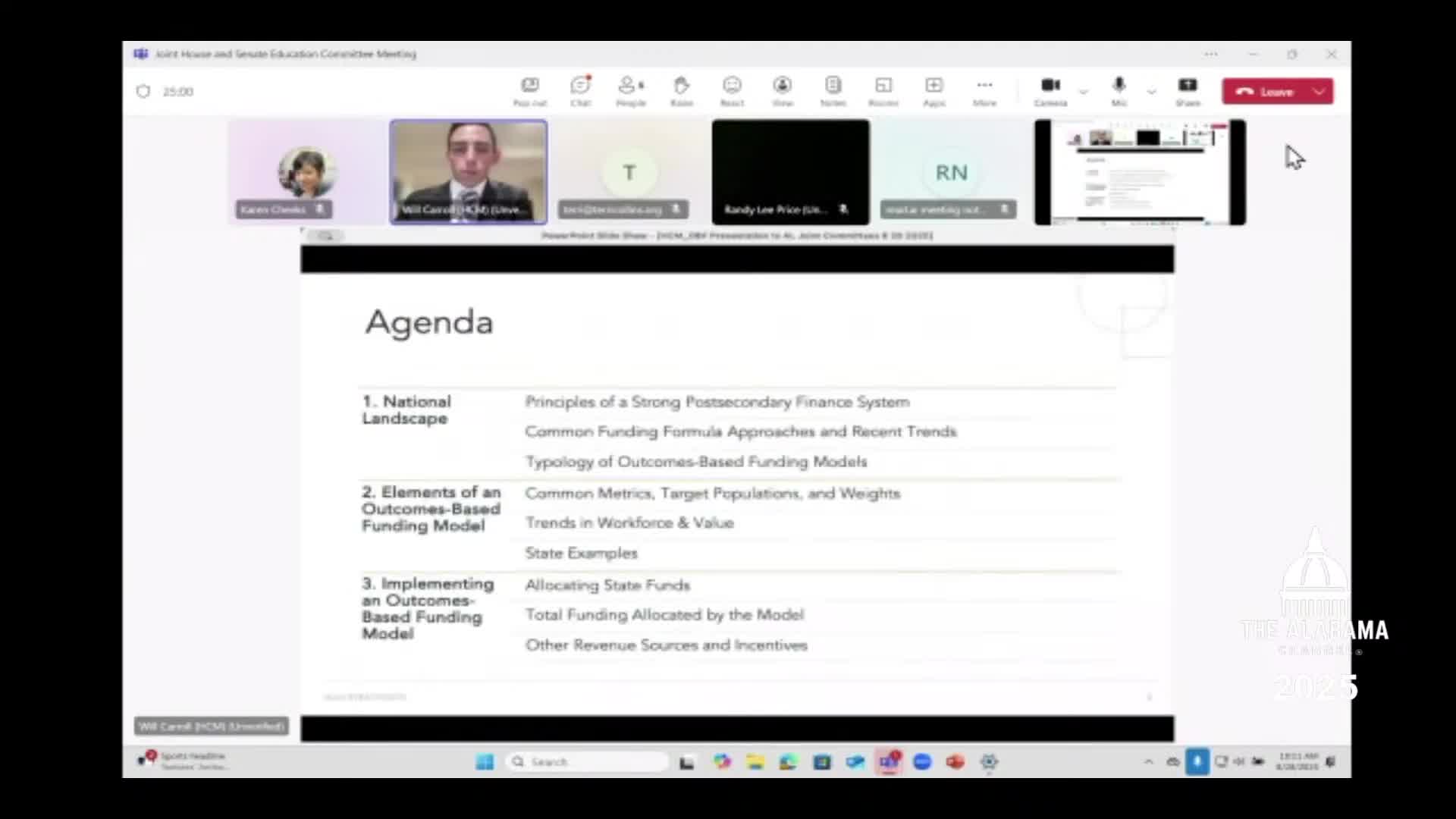HCM Explores States' Funding Models for Higher Education Outcomes
August 29, 2025 | Joint Interim Committees, Alabama Legislative Sessions, Alabama
Thanks to Scribe from Workplace AI , all articles about Alabama are free for you to enjoy throughout 2025!

This article was created by AI using a video recording of the meeting. It summarizes the key points discussed, but for full details and context, please refer to the video of the full meeting. Link to Full Meeting
The agenda began with an overview of how states fund higher education, emphasizing the importance of aligning funding with state goals and objectives. Approximately 30 states currently utilize outcomes-based funding, which rewards institutions for student success metrics such as degree completion and workforce readiness. This approach aims to ensure that state investments in education yield tangible results, aligning financial support with strategic educational outcomes.
Key discussions highlighted the principles of effective funding systems, including the necessity for adequate resources to deliver quality education and the importance of responsiveness to enrollment changes. The committee explored different funding structures, such as base plus funding, enrollment-based funding, and weighted enrollment models that consider student demographics and needs. Each model has its advantages and disadvantages, with outcomes-based funding being particularly noted for its potential to incentivize student success while also posing risks of reduced access for underrepresented populations.
The committee also examined Alabama's current funding landscape, noting a hybrid approach in the two-year sector that combines various funding models, while the four-year institutions largely follow a traditional funding method. This hybrid model reflects a national trend where states are increasingly blending different funding strategies to balance stability and responsiveness to student needs.
As the meeting concluded, members acknowledged the importance of ongoing discussions about funding strategies that not only support educational institutions but also ensure equitable access and success for all students. The committee plans to continue exploring these issues in future sessions, aiming to refine Alabama's higher education funding framework to better serve its population.
Converted from Alabama Joint Legislative Education Committee meeting on August 29, 2025
Link to Full Meeting
Comments
View full meeting
This article is based on a recent meeting—watch the full video and explore the complete transcript for deeper insights into the discussion.
View full meeting
